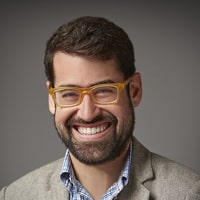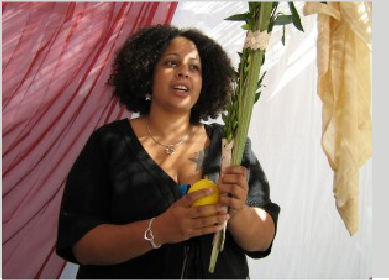The first five books of the Bible describe the origins and laws of the ancient people of Israel. Reading the Torah, as these books are called, became central to the religious life of Jews in late antiquity, and they continue to be read in Jewish liturgy today.
How was the Bible read in ancient Jewish liturgy?
We have three main sources of evidence for reading the Bible liturgically in ancient Judaism, although they all come with challenges. The first is the archaeology of ancient synagogues: many synagogues such as the synagogue at Ostia contain special cabinets that were clearly intended to hold biblical scrolls. Some also contain “reading tables” or stands where the Torah would be read. The synagogue at Sardis is a prime example of this.
Rabbinic literature also contains discussions of reading the Bible as part of the liturgy. Tractate Megillah in the Mishnah, Tosefta, and Talmuds, in particular, describes how and when the scroll of Esther should be read and also contains a list of passages to be read on particular holidays. It assumes the presence of an interpreter at most readings.
Finally, there are many preserved lists of Torah portions and their divisions that survive from the medieval period. These are called sidra lists, and while they are later than much of biblical literature, they seem to attest to versions of many of the practices described above.
How is the Torah read in Jewish liturgy today?
The Torah (and the Hebrew Bible more broadly) is read in a variety of different ways as a part of Jewish liturgy today. We can put these types of reading into four main categories.
The first category is sometimes called the lectio continua, or continual reading. At its most basic level, this is the reading of the Torah in a repetitive cycle over the course of the year. The Torah is divided into a series of divisions, called parshiot (parashah in the singular), in modern synagogues. One, or sometimes two, parshiot, which are typically several chapters long, are read each week. This reading, called the Torah Service, or qri’at ha-Torah, happens during the regular morning service on Mondays and Thursdays and most extensively on Saturday mornings and afternoons. It also occurs during certain festivals and holidays. Some synagogues use what is called the triennial cycle, in which each parashah is divided into three, and only one of those three divisions is read every year. The reading can be done by a variety of figures in the congregation. It is typically done in Hebrew, according to a tradition of melodies, known as cantillation.
The second category of reading is called the haftarah. Haftarah comes from the Hebrew root meaning “conclusion.” A haftarah reading comes from one of the Prophetic books (Nevi’im) and is performed after the main Torah reading on Sabbaths and holidays. There are set haftarah readings that go along with each parashah, or Torah portion, although these might differ between communities.
The third category of reading is “special” readings. Certain weeks of the year and certain holidays have particular readings from the Torah assigned to them. Regardless of where the community is in the continual reading cycle, when these weeks arrive, the special readings take precedence. In many contemporary communities, when the Sabbath and a special reading coincide, the special readings are added onto the end of the regular reading in what is called a maftir, or “conclusion”; this way, the regular reading cycle is not interrupted.
Finally, the fourth category involves various readings, often from the Writings (Ketuvim), that are read in conjunction with various holidays, but not necessarily as part of the Torah service. This category of reading includes the book of Esther read on Purim and Lamentations on Tisha b’Av, which commemorates the temple’s destruction. Similarly, Ecclesiastes is traditionally read on Sukkot, Ruth on Shavuot, and the Song of Songs on Passover. There are other traditions beyond these “five scrolls.” Psalm 27, for example, is read during the month of Elul; Jonah is read on Yom Kippur; and a selection of psalms, known as Hallel, or “praise,” is read on certain holidays and new moons. Other elements of the Jewish liturgy have verses and paragraphs from the Hebrew Bible woven into them: the twice-daily Shema, for example, contains passages from Deuteronomy and Numbers, and the central prayer of Jewish liturgy, the Amidah, interweaves angelic visions with quotations from Isaiah and Ezekiel.
Bibliography
- Berkovitz, Abraham Jacob. A Life of Psalms in Jewish Late Antiquity. University of Pennsylvania Press, 2023.
- Langer, Ruth. “From Study of Scripture to a Reenactment of Sinai: The Emergence of the Synagogue Torah Service.” Cantors Assembly Journal of Synagogue Music 31.1 (2006): 104–25.
- Mann, Jacob. The Bible as Read and Preached in the Old Synagogue: A Study in the Cycles of the Readings from Torah and Prophets, as Well as from Psalms, and in the Structure of the Midrashic Homilies. Ktav, 1971.




